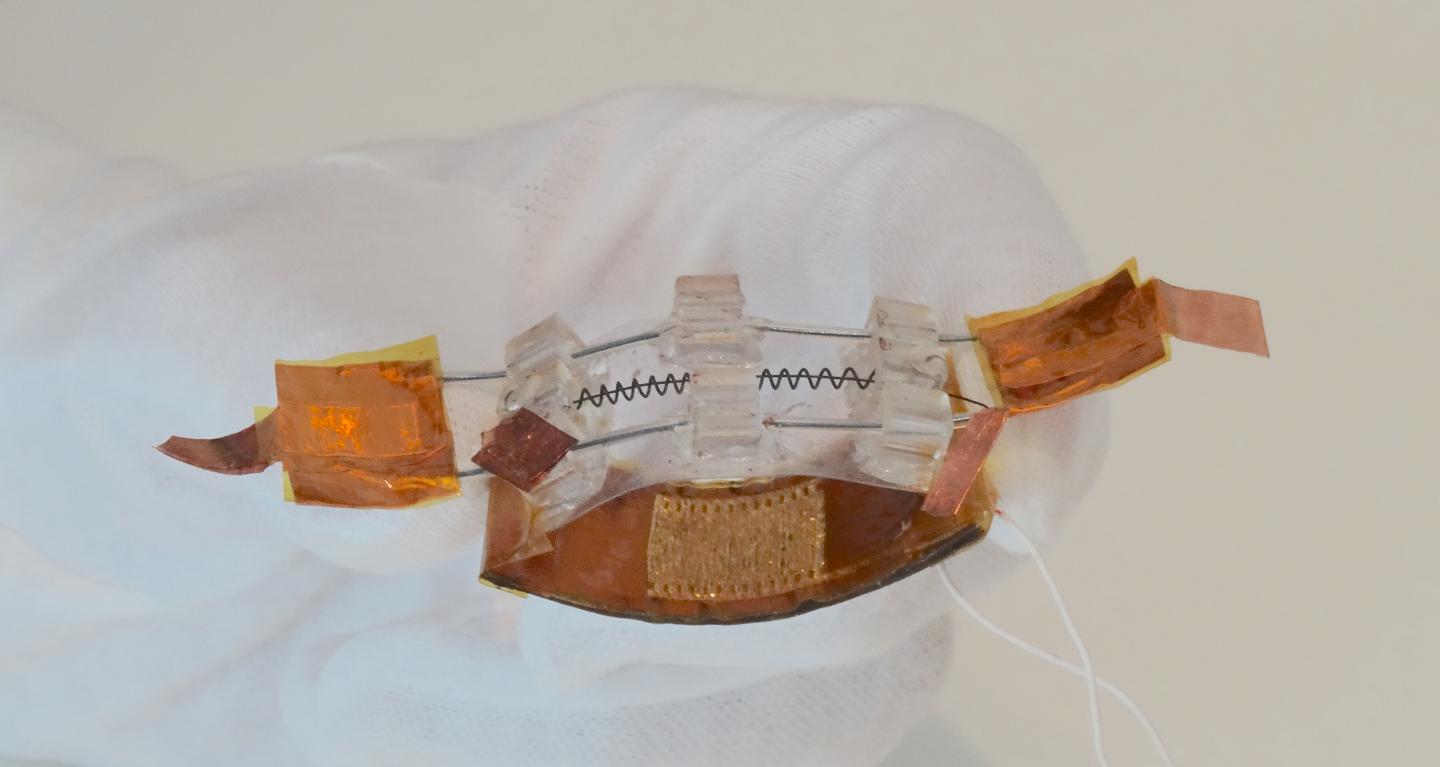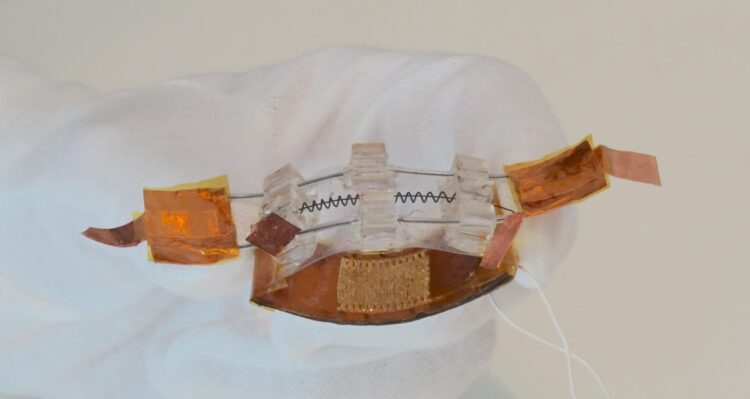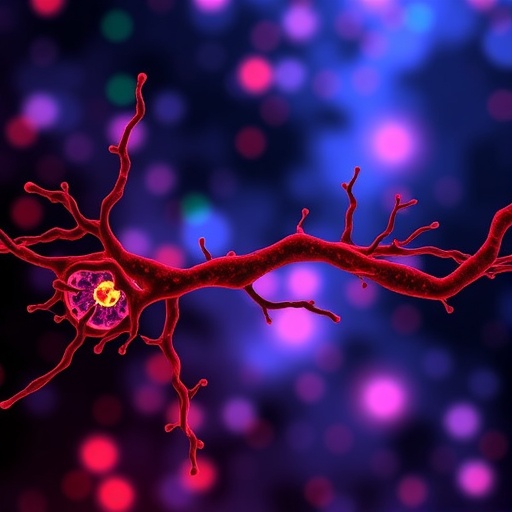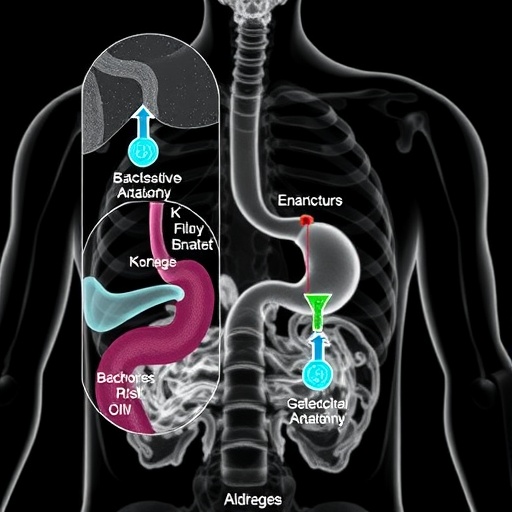New device can be attached to the bladder to provide real-time volume detection and efficient voiding capabilities

Credit: National University of Singapore
Individuals with an underactive bladder, for example following a spinal cord injury, often cannot sense bladder fullness or are unable to empty the bladder completely. This distressing symptom can seriously affect one’s quality of life. A dysfunctional bladder may also lead to medical complications such as urinary tract infection, as well as physical discomfort and potential for personal embarrassment.
Dr Faezeh Arab Hassani, a researcher from the National University of Singapore (NUS), has recently invented a device that can monitor bladder volume in real time and effectively empty the bladder. This innovation may open up a new treatment option for patients with underactive bladders in the near future.
Dr Arab Hassani worked closely with researchers from the NUS Department of Electrical Engineering and Computer Engineering, the NUS Department of Biomedical Engineering, as well as lead collaborator Professor Takao Someya and his research team at the University of Tokyo, and took more than a year to develop the novel bladder system. This breakthrough was first reported in the journal Science Advances on 1 May 2020.
Soft solution for a weak bladder
Among patients who have some form of spinal cord injury, about 80 per cent of them suffer from some degree of bladder dysfunction. There is currently no cure for the underactive bladder condition, and while some implantable treatment options are available, they can only sense the fullness of the bladder and only empty it up to 43 per cent.
“To help these patients, what clinicians need is an integrated bladder system that achieves both volume sensing capability and high voiding efficiency. Given that the urinary bladder is unique among human organs as it undergoes large volume changes during the storage and urination phases, the device requires careful compatibility considerations to avoid interference with the extreme volume changes of the bladder,” said Professor Nitish Thakor, who supervised the research.
Dr Arab Hassani’s novel system comprises a sensor integrated with an actuator. The soft and thin sensor monitors the bladder volume continuously while the actuator is equipped with strong emptying force to clear the bladder. The actuator contains a shape memory alloy (SMA) spring, which keeps the sensor in contact with the surface of the bladder at all times for precise volume detection.
Experiments by the team showed that in addition to the real-time volume sensing capability, the device can also effectively empty between 70 to 100 per cent of the bladder. “This is a significant achievement as its performance is comparable to the efficiency of intermittent catheterisation treatment currently being used, which has many shortcomings,” shared Dr Arab Hassani, the first author of this study. “We need a soft but efficient device to help a weak bladder.”
Improvements and potential applications
Moving forward, the NUS research team is working to improve the functionality of the device, and looking into making the system wireless for ease of use and movement.
“The bladder system can be adjusted to the user’s bladder size to ensure optimal operation,” suggested Dr Arab Hassani. “The ideal scenario would be to integrate the device with a mobile application, which can retrieve and process the sensor data to allow the user to trigger voiding at will.”
The team’s advances in soft materials and their fabrication techniques also hold other potential applications in the medical field.
“Our soft system demonstrated on a bladder can serve as a model for augmenting other organs as well,” elaborated Prof Thakor. “I believe this novel design can pave the way for the development of sensors and actuators that are compatible with other soft and distensible organs like blood vessels, the heart, and the gastrointestinal system, as these organs require both sensing and actuation to achieve functions like pumping and peristalsis under soft actuation and control.”
###
Media Contact
Denise Yuen
[email protected]
Original Source
https:/
Related Journal Article
http://dx.





